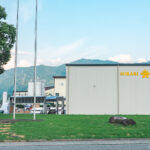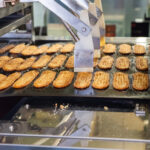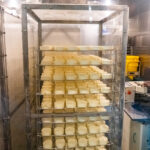This post may contain affiliate links. Please read our disclosure policy.
Explore how Japan’s most iconic soy sauce is brewed, bottled, and made at this fun and flavorful Kikkoman Factory Tour.

A Behind-the-Scenes Look at a Pantry Staple
As a family who cooks and eats together, we’re always curious about where our ingredients come from. We had the chance to tour the Kikkoman Soy Sauce Factory in Noda—the birthplace of one of Japan’s most famous condiments.
This wasn’t your average “walk-through-and-take-a-sample” kind of tour. We got to see the centuries-old brewing process up close, smell the rich aroma of fermenting soybeans, and even try our hand at bottling soy sauce. It was hands-on, well-paced, and honestly, way more fun than we expected.
What Makes Kikkoman Soy Sauce So Special?

Kikkoman uses only six core ingredients: soybeans, wheat, salt, water, yeast, and lactic acid bacteria. The secret lies in their proprietary Koji mold, Kikkoman Aspergillus, and their traditional brewing method.
Instead of relying on shortcuts or chemical seasoning, Kikkoman follows a slow, natural fermentation process that’s been refined over 300 years.
The Brewing Process in Simple Steps:
- Processing and cooking raw ingredients
- Koji culturing
- Brewing (Shikomi)
- Pressing/Refining
- Pasteurizing
- Bottling
- Shipping
Everything is carefully controlled to preserve flavor and aroma while following long-standing traditions.
Try It Yourself: Hands-On Brewing and Tasting

Our favorite part of the visit was getting to participate in each step of the process (minus the six-month wait). We mixed the soybeans and wheat, touched the warm fermenting mash, and observed how the moromi changes in texture and color over time.
We even got to flavor and grill our own senbei (rice crackers), which our kids devoured right away.
Goyogura – the Imperial Soy Sauce Brewery

Inside the same grounds is Goyogura (御用蔵), a historic facility that brews a premium soy sauce for the Japanese Imperial Household. This soy sauce is aged for one full year instead of six months in traditional vats.
Visitors can view antique tools, learn about this royal brewing tradition, and purchase a limited-edition bottle that’s only sold in Japan or at the factory shop.
Finish with a Treat: Soy Sauce Ice Cream
Before leaving, we stopped at the cafe next to the gift shop to try their soy sauce ice cream. It tasted like rich vanilla with a mellow, toasty caramel flavor. We weren’t sure what to expect, but it ended up being one of our favorite desserts of the trip.
How to Get to Kikkoman Factory
Train
- From Tokyo Akihabara Station, take the Tsukuba Express to Nagareyama-Otakanomori Station, then transfer to the Tobu Urban Park Line to Nodashi Station. This takes about 50 minutes. The factory is a 10-minute walk from Nodashi Station.
- Total travel time: 60–75 minutes.
Pro Tip: Reservations are required and can be made online. Tours are usually in Japanese, so check for English availability or visit with a Japanese speaker.
Is the Kikkoman Factory Tour Worth Visiting?
Kikkoman factories throughout Japan accepts tours but you need to call them ahead of time. If you enjoy food, history, or behind-the-scenes experiences, it’s one we would recommend. The factory is beautifully maintained, the staff is welcoming, and the tour strikes a perfect balance between education and hands-on fun.
Want to know how miso is made? Check out our tour of Hikari Miso’s factory.




